
Bhubaneswar: The Temple City of India
Explore Bhubaneswar, the Temple City of India, where ancient traditions, rich culture, and natural beauty create an unforgettable travel experience.
Bhubaneswar, the capital of the Indian state of Odisha, is often referred to as the 'Temple City of India'. With a rich history that dates back over 3,000 years, Bhubaneswar is a city where ancient traditions blend seamlessly with modernity. It is home to more than 500 temples, offering a unique spiritual experience for visitors. The city's most famous landmark, the Lingaraj Temple, is a testament to the architectural prowess of ancient India and continues to draw devotees and tourists alike. Bhubaneswar is not just about temples; it is also a city that celebrates culture with fervor. The Odisha State Museum and the Museum of Tribal Arts and Artifacts provide deep insights into the region's rich cultural heritage and traditions. Additionally, the Ekamra Haat is a vibrant market that showcases traditional crafts, textiles, and local cuisine, making it a must-visit for anyone looking to take a piece of Odisha back home. Nature enthusiasts will find plenty to love in Bhubaneswar as well. The Nandankanan Zoological Park, with its unique white tiger safari, and the tranquil Bindusagar Lake offer a respite from the bustling city life. The city's well-planned parks and gardens, like the Biju Patnaik Park and the Ekamra Kanan Botanical Gardens, provide serene spots to relax and unwind. With its blend of history, culture, and nature, Bhubaneswar promises a well-rounded and enriching travel experience.
Local tips in Bhubaneswar
- Visit the Lingaraj Temple early in the morning to avoid crowds.
- Wear comfortable walking shoes as many temples involve a lot of walking.
- Try traditional Odia cuisine at local eateries for an authentic taste of the region.
- Hire a local guide to get comprehensive insights into the history and significance of the temples.
- Carry a water bottle and stay hydrated, especially during the summer months.
- Respect local customs and dress modestly when visiting religious sites.
- Check for local festivals happening during your visit for a chance to experience Bhubaneswar's vibrant culture.
Bhubaneswar: The Temple City of India
Bhubaneswar, the capital of the Indian state of Odisha, is often referred to as the 'Temple City of India'. With a rich history that dates back over 3,000 years, Bhubaneswar is a city where ancient traditions blend seamlessly with modernity. It is home to more than 500 temples, offering a unique spiritual experience for visitors. The city's most famous landmark, the Lingaraj Temple, is a testament to the architectural prowess of ancient India and continues to draw devotees and tourists alike. Bhubaneswar is not just about temples; it is also a city that celebrates culture with fervor. The Odisha State Museum and the Museum of Tribal Arts and Artifacts provide deep insights into the region's rich cultural heritage and traditions. Additionally, the Ekamra Haat is a vibrant market that showcases traditional crafts, textiles, and local cuisine, making it a must-visit for anyone looking to take a piece of Odisha back home. Nature enthusiasts will find plenty to love in Bhubaneswar as well. The Nandankanan Zoological Park, with its unique white tiger safari, and the tranquil Bindusagar Lake offer a respite from the bustling city life. The city's well-planned parks and gardens, like the Biju Patnaik Park and the Ekamra Kanan Botanical Gardens, provide serene spots to relax and unwind. With its blend of history, culture, and nature, Bhubaneswar promises a well-rounded and enriching travel experience.
When is the best time to go to Bhubaneswar?
Iconic landmarks you can’t miss
Konark Sun Temple
Explore the breathtaking Konark Sun Temple, a UNESCO World Heritage Site that showcases intricate architecture and rich heritage in Odisha.
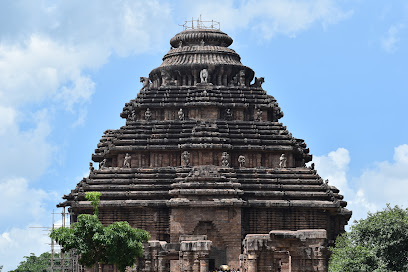
Lingaraj Temple
Explore the architectural marvel of Lingaraj Temple, a sacred Hindu site that embodies the rich heritage of Bhubaneswar, Odisha.
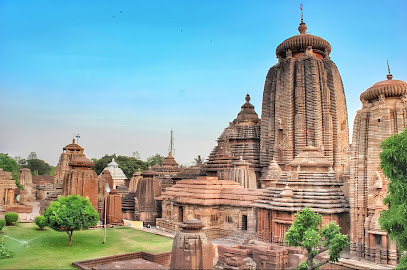
Udayagiri and Khandagiri Caves
Discover the historical and spiritual significance of Udayagiri and Khandagiri Caves, a must-visit destination for cultural enthusiasts in Odisha.
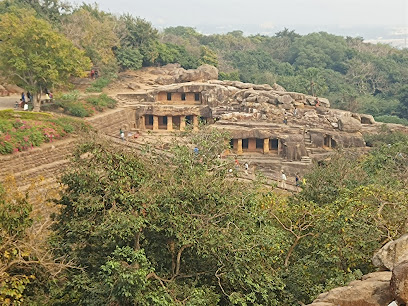
Dhauli Shanti Stupa
Discover the tranquil beauty and historical significance of Dhauli Shanti Stupa, a remarkable landmark in Bhubaneswar, Odisha, showcasing a legacy of peace.
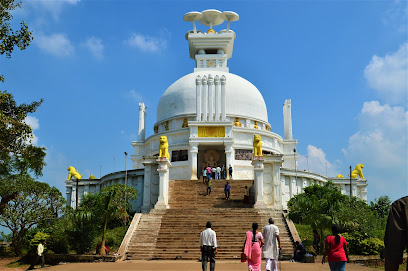
MAYFAIR Lagoon, Bhubaneswar
Experience luxury and tranquility at Mayfair Lagoon, Bhubaneswar, where exquisite dining and serene surroundings await you.

Pal Heights Mall
Discover the vibrant shopping and dining experience at Pal Heights Mall in Bhubaneswar, a perfect blend of culture and modernity.
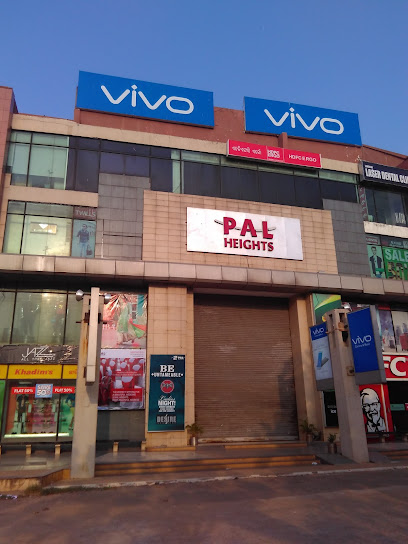
Biju Patnaik Park
Experience tranquility and vibrant local art at Biju Patnaik Park, a beautiful green space in Bhubaneswar perfect for relaxation and cultural exploration.
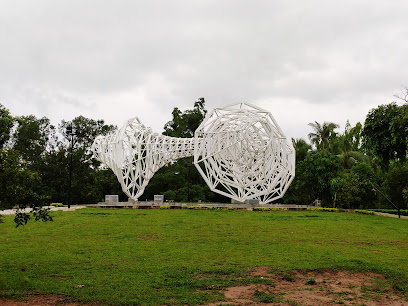
ISKCON Bhubaneswar
Discover the spiritual heart of Odisha at ISKCON Bhubaneswar, where devotion meets stunning architecture and cultural vibrance.
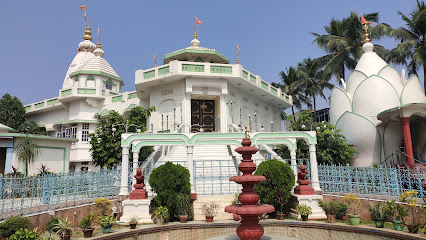
Ekamra Haat
Experience the vibrant culture of Odisha at Ekamra Haat, a bustling market for local handicrafts and authentic Odia cuisine in Bhubaneswar.
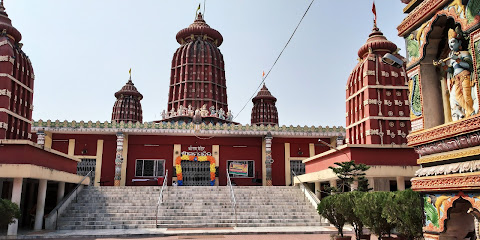
MAYFAIR Convention, Bhubaneswar
Discover the luxurious MAYFAIR Convention in Bhubaneswar, a premier destination for events and relaxation amidst Odisha's cultural richness.

Ekamra Kanan Botanical Gardens
Discover the serene beauty of Ekamra Kanan Botanical Gardens in Bhubaneswar, a lush paradise filled with diverse flora and tranquil pathways.

Shree Mukteswara Temple, Bhubaneswar
Explore the architectural marvel of Shree Mukteswara Temple in Bhubaneswar, a sacred site showcasing exquisite carvings and rich cultural heritage.
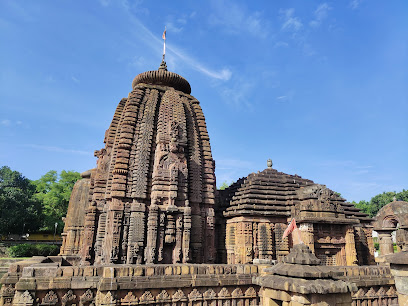
Regional Science Centre Bhubaneswar (Science Park)
Discover the fascinating world of science at the Regional Science Centre Bhubaneswar, with interactive exhibits and an engaging science park.
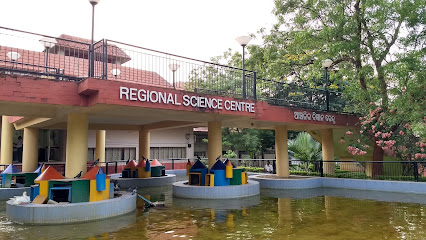
IDCO Exhibition Ground
Explore the vibrant IDCO Exhibition Ground in Bhubaneswar, where culture, commerce, and creativity come together in spectacular exhibitions and fairs.

Ocean World Water Park
Experience the thrill of water adventures at Ocean World Water Park in Odisha, featuring exhilarating rides, family fun, and unique attractions.
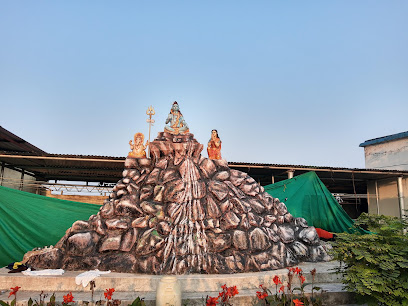
Unmissable attractions to see
Nandankanan Zoological Park
Explore the rich diversity of wildlife at Nandankanan Zoological Park - an enchanting destination in Bhubaneswar, Odisha.
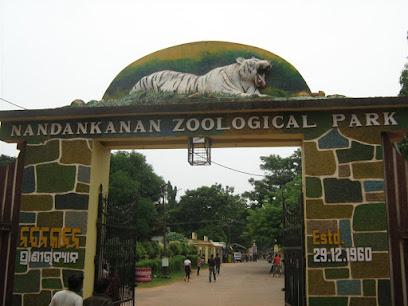
Lingaraj Temple
Explore the Lingaraj Temple in Bhubaneswar, Odisha - a stunning example of Kalinga architecture, rich in history and spirituality.
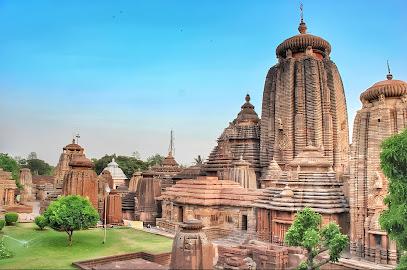
Udayagiri and Khandagiri Caves
Unveil the ancient history and spiritual heritage at Udayagiri and Khandagiri Caves, a mesmerizing historical landmark in Bhubaneswar, Odisha.

Dhauli Shanti Stupa
Explore the serene Dhauli Shanti Stupa, a historical Buddhist monument offering peace, beauty, and rich cultural heritage in Bhubaneswar, Odisha.

IG Park
Explore the serene beauty of IG Park in Bhubaneswar, featuring lush greenery, walking paths, and the iconic Indira Gandhi Statue for a perfect outdoor escape.
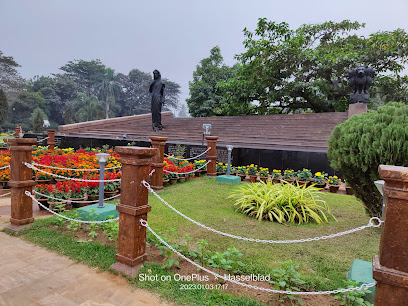
Biju Patnaik Park
Explore the serene Biju Patnaik Park in Bhubaneswar, Odisha, a perfect blend of nature, relaxation, and cultural experiences.
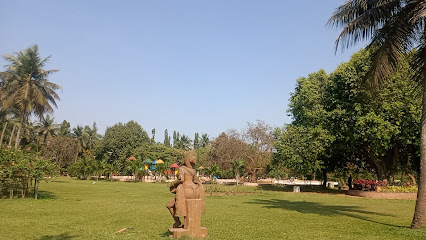
Odisha State Museum
Explore the Odisha State Museum, a cultural gem in Bhubaneswar showcasing the state's rich history, art, and heritage through its extensive collections.
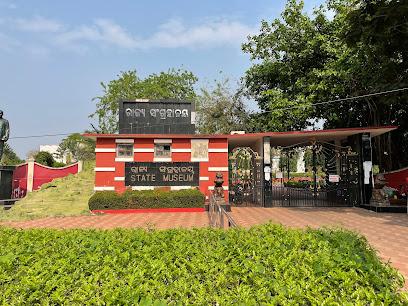
Jayadev Vatika
Discover the serene beauty of Jayadev Vatika, a lush park in Bhubaneswar, where nature meets tranquility and cultural heritage thrives.
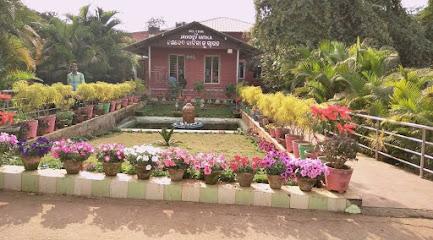
ISKCON Bhubaneswar
Explore the serene beauty and spiritual richness of ISKCON Bhubaneswar, a captivating Hindu temple and cultural center in Odisha.
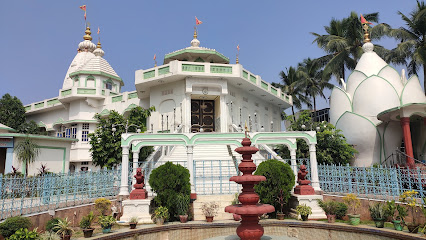
Ekamra Haat
Discover the vibrant arts and crafts of Odisha at Ekamra Haat, Bhubaneswar's premier exhibition and trade center showcasing local culture.
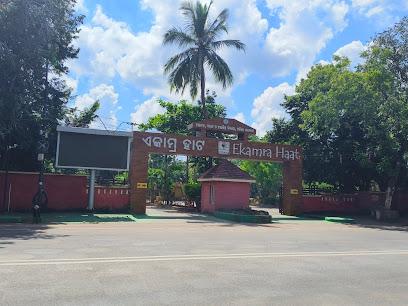
Madhusudan Das Park
Explore the serene beauty of Madhusudan Das Park in Bhubaneswar, a green haven perfect for relaxation, family outings, and cultural experiences.
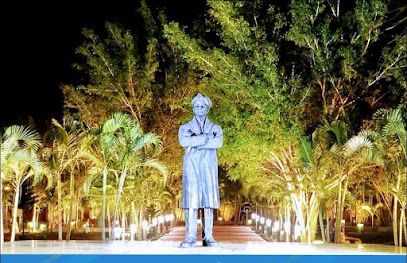
Mukteshwar Mahadev Temple, Bhubaneswar
Discover the sacred tranquility of Mukteshwar Mahadev Temple in Bhubaneswar, a masterpiece of Kalinga architecture and spiritual heritage.
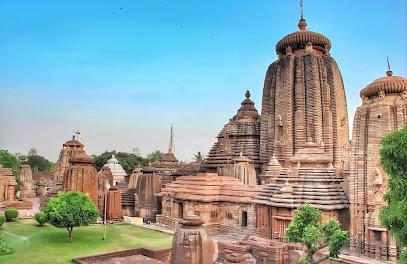
Ekamra Kanan Botanical Gardens
Explore the stunning flora at Ekamra Kanan Botanical Gardens in Bhubaneswar, a lush haven for nature lovers and a peaceful escape from city life.
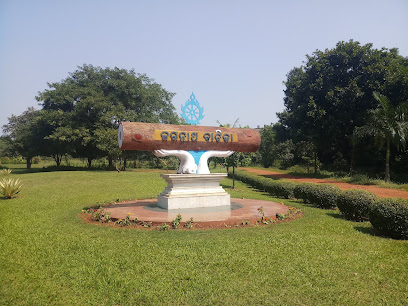
Regional Science Centre Bhubaneswar (Science Park)
Discover the magic of science at the Regional Science Centre Bhubaneswar, a family-friendly destination with interactive exhibits and an amazing planetarium.
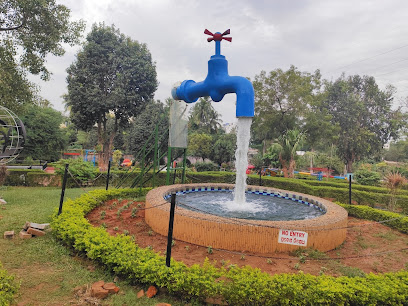
Rajarani Temple, Bhubaneswar
Discover the architectural beauty and spiritual tranquility of Rajarani Temple, a historical gem in Bhubaneswar, Odisha.
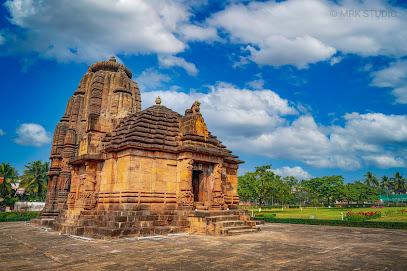
Essential places to dine
Barbeque Nation
Discover the ultimate barbecue experience at Barbeque Nation in Bhubaneswar - where grilling meets gourmet indulgence in a lively buffet setting.
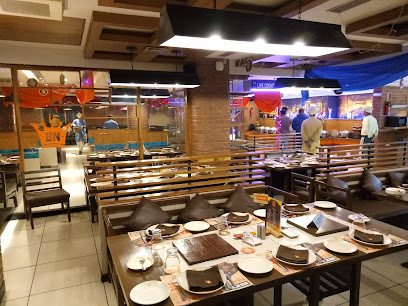
Truptee Veg Restaurant - Best Veg Restaurant in Bhubaneswar
Experience authentic South Indian flavors at Truptee Veg Restaurant in Bhubaneswar - a paradise for vegetarian food lovers.
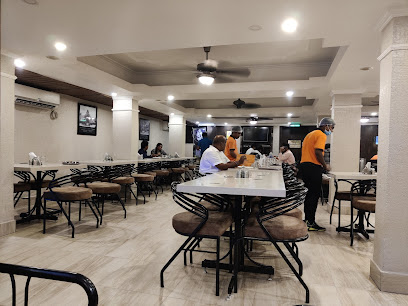
99 North Restaurant
Discover Bhubaneswar's culinary delight at 99 North Restaurant - where Indian spices meet Chinese flavors in a family-friendly atmosphere.
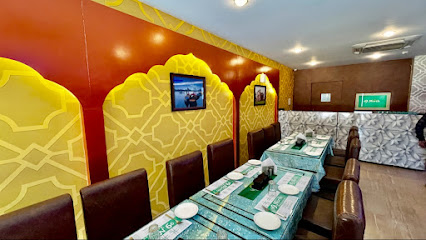
OOPRE Kitchen and Bar
Discover culinary excellence at OOPRE Kitchen and Bar in Bhubaneswar—where global flavors meet vibrant nightlife.
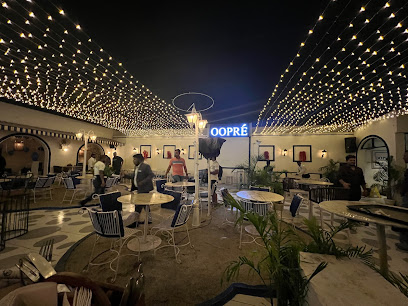
Jungle View
Discover the best non-vegetarian delights at Jungle View in Bhubaneswar - a culinary paradise for fast food and chicken lovers.
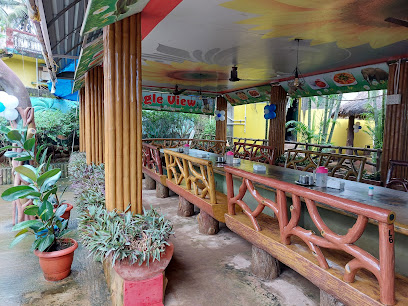
Odisha Hotel
Savor authentic Indian cuisine at Odisha Hotel in Bhubaneswar—where tradition meets taste in every dish.
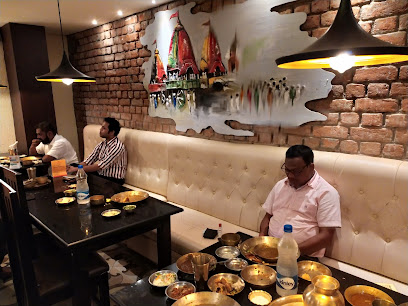
Venus Inn Restaurant
Discover the flavors of India at Venus Inn Restaurant - your go-to spot for delicious South Indian and Chinese cuisine in Bhubaneswar.
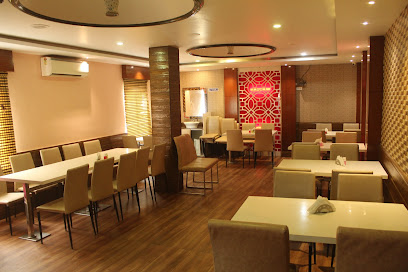
Malva Restaurant
Discover the authentic tastes of Chinese and Thai cuisine at Malva Restaurant in Bhubaneswar—perfect for families and food enthusiasts alike.
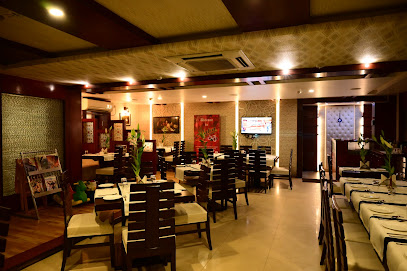
Aangan Premium
Experience authentic Indian cuisine at Aangan Premium in Bhubaneswar—where flavor meets family-friendly dining.
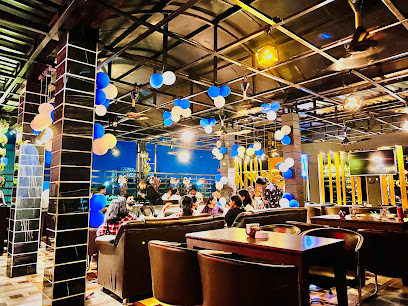
Narula's Restaurant
Experience authentic North Indian cuisine at Narula's Restaurant in Bhubaneswar – where tradition meets taste.
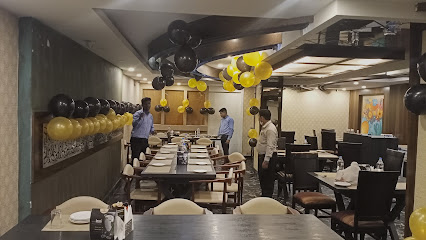
JUGAAD JN.
Experience the vibrant flavors of India at JUGAAD JN., where delicious vegetarian dishes meet warm hospitality in Bhubaneswar.
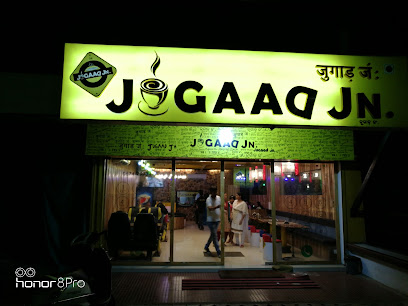
Keeva Restaurant & Banquet
Experience the vibrant flavors of India and China at Keeva Restaurant & Banquet in Bhubaneswar - a must-visit culinary destination.

9th Street
Experience exquisite dining at 9th Street in Bhubaneswar - where Chinese flavors meet Continental elegance in a vibrant setting.

Taste of China
Experience authentic Chinese cuisine at Taste of China in Bhubaneswar - a must-visit culinary destination for food lovers.
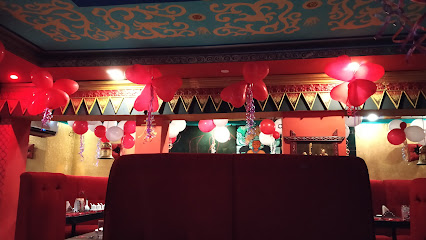
Grand Kalinga Restaurant
Savor authentic Indian cuisine at Grand Kalinga Restaurant in Bhubaneswar - perfect for family gatherings and celebrations.
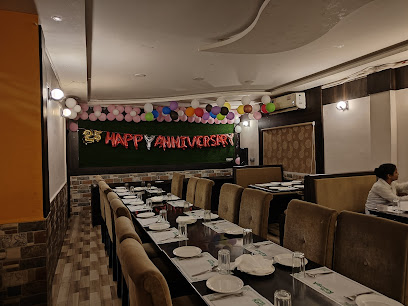
Markets, malls and hidden boutiques
Tea Shop
Experience local flavors and a warm atmosphere at Bhubaneswar's vibrant Tea Shop, perfect for tea lovers and cultural enthusiasts alike.

Pantaloons (Saheed Nagar, Bhubaneswar)
Explore Pantaloons in Bhubaneswar for a diverse range of fashionable clothing and accessories that cater to all ages and styles.
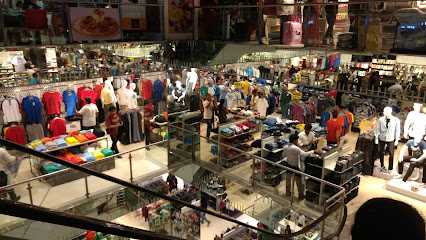
Fashion Factory
Discover the ultimate shopping experience at Fashion Factory, Bhubaneswar's premier destination for stylish clothing and accessories.

V-Mart - Bhubaneswar-Patia
Experience the best of shopping at V-Mart in Bhubaneswar - your one-stop destination for clothing, convenience, and unbeatable variety.
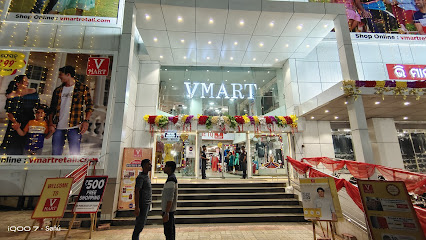
Utkalika (Govt. Of Odisha Handicrafts)
Discover Odisha's rich handicraft legacy at Utkalika, where each artisan-crafted piece tells a story of tradition and creativity.
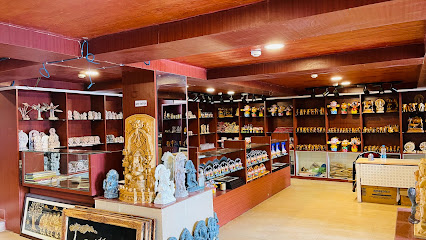
Shoppers Stop
Discover the ultimate shopping experience at Shoppers Stop in Bhubaneswar's Utkal Kanika Galleria Mall, featuring a diverse range of fashion and lifestyle products.
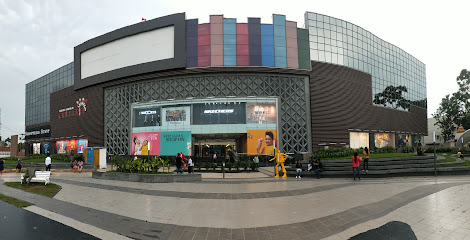
Mehers'
Explore the rich heritage of Odisha through exquisite sarees and modern attire at Mehers', a premier clothing destination in Bhubaneswar.
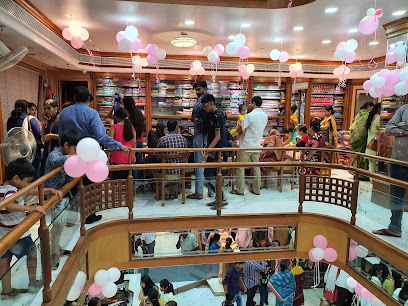
Sridurga - A family cloth store
Discover a vibrant array of clothing for the whole family at Sridurga, Bhubaneswar’s premier shopping destination for traditional and modern attire.
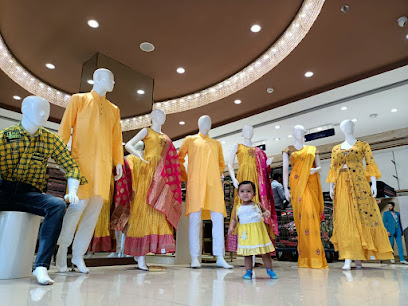
Amber
Explore Amber in Bhubaneswar for stylish, affordable clothing that caters to all ages in a welcoming atmosphere.

Lifestyle Stores
Explore Lifestyle Stores in Bhubaneswar for unique gifts and trendy fashion in a vibrant shopping atmosphere.

Kalamandir Market Building Bhubaneswar
Explore the vibrant Kalamandir Market Building in Bhubaneswar for unique clothing and a rich cultural experience that embodies the spirit of Odisha.
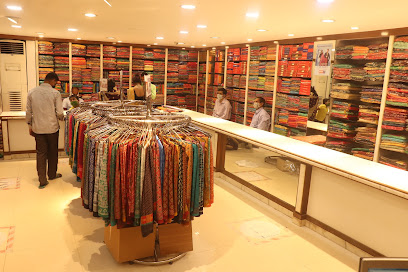
Firstcry.com Store Bhubaneswar- Rupali Square
Explore a wide range of baby and children's products at Firstcry.com Store in Bhubaneswar, where quality meets variety for your little ones.
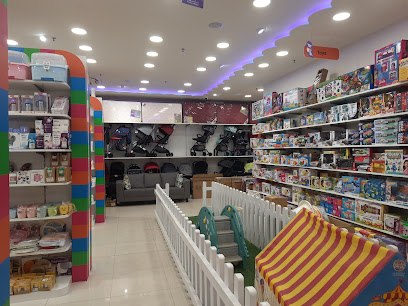
Sambhav Boutique - Exclusive Creations by Bandana Das ( Plus Size Specialist )Rental outfits
Discover exclusive plus-size fashion and costume rentals at Sambhav Boutique in Bhubaneswar, where style meets inclusivity and creativity.
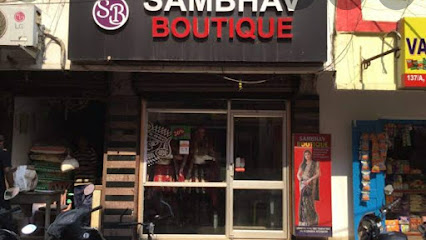
Saree Mandir (Best Saree Shop in Bhubaneswar) - Best Saree Shop in Bhubaneswar
Discover Bhubaneswar's finest saree collection at Saree Mandir, a haven for bridal and traditional attire lovers, celebrating India's rich textile culture.
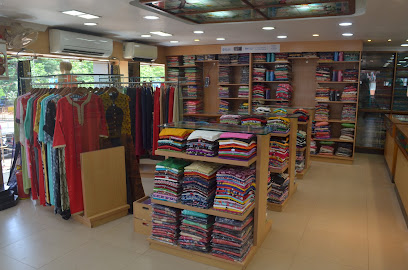
Firstcry.com Store Bhubaneswar Janpath, Bapuji Nagar
Explore a world of baby essentials at Firstcry.com Store Bhubaneswar, your one-stop destination for quality baby products and more.

Essential bars & hidden hideouts
OOPRE Kitchen and Bar
Experience the vibrant flavors and nightlife at OOPRE Kitchen and Bar, the ultimate culinary retreat in Bhubaneswar.
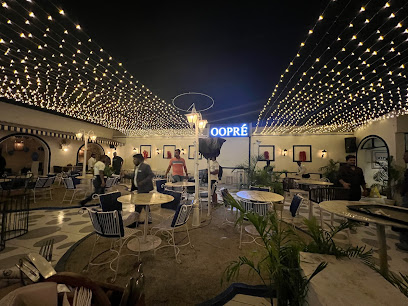
Moody Blues Bar & Restaurant
Discover the perfect blend of vibrant nightlife and gourmet dining at Moody Blues Bar & Restaurant in Bhubaneswar, Odisha.
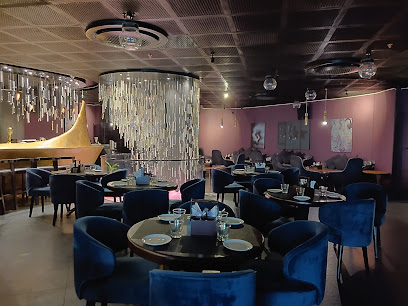
EMBASSY CLUB & SKY LOUNGE
Experience the vibrant nightlife of Bhubaneswar at Embassy Club & Sky Lounge, where stunning views meet exquisite drinks in a lively atmosphere.
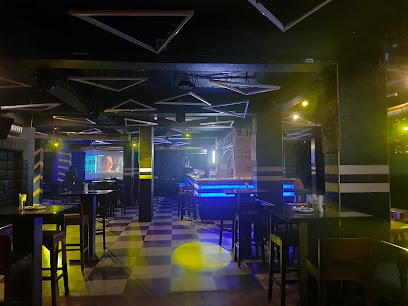
#BBi Booze Buzz Inhouse | Cocktail bar and Restaurant
#BBi Booze Buzz Inhouse: Discover Bhubaneswar's premier cocktail bar and restaurant for unforgettable dining and vibrant nightlife.
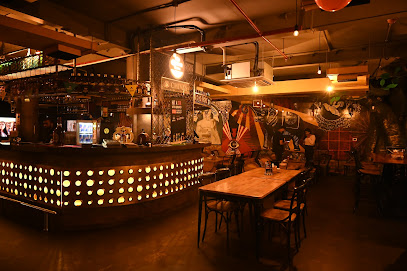
MAD MULE BAR
Discover the lively atmosphere of Mad Mule Bar, a perfect blend of bar and restaurant in Bhubaneswar, ideal for an unforgettable night out.
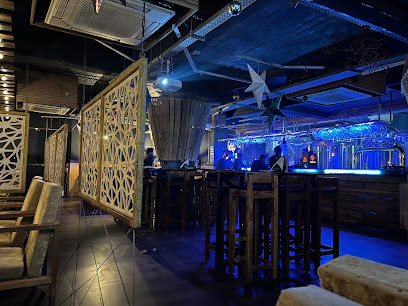
Ajit Bar And Restaurant
Enjoy a delightful blend of grilled delicacies and refreshing drinks at Ajit Bar And Restaurant in Bhubaneswar, a favorite spot for locals and tourists alike.
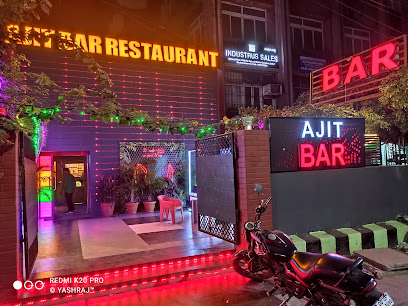
Bottle - Bar & Restaurant
Experience the vibrant nightlife and exquisite dining at Bottle - Bar & Restaurant in Bhubaneswar, a perfect blend of local flavors and global cuisines.
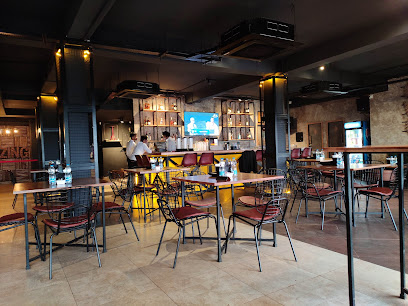
DESIRE- the lounge bar
Discover the vibrant nightlife at DESIRE - The Lounge Bar in Bhubaneswar, offering great cocktails, delicious food, and a lively dance atmosphere.
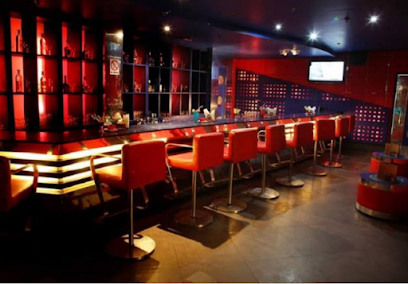
Pegasus Bar
Discover the vibrant Pegasus Bar in Bhubaneswar, where exquisite dining meets a lively nightlife experience in the heart of Odisha.
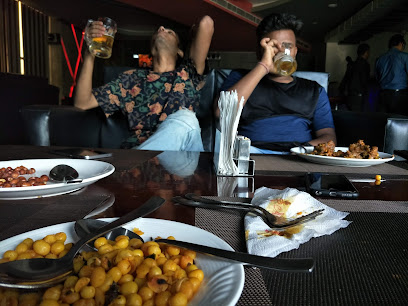
Excellency Gold Bar
Discover the vibrant nightlife at Excellency Gold Bar in Bhubaneswar, where exquisite drinks and lively ambiance await every visitor.
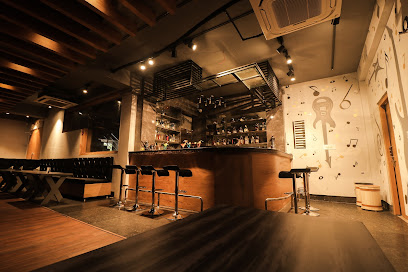
Fidalgo- Bar & Banquets
Experience the vibrant nightlife and exquisite dining at Fidalgo - Bar & Banquets in Bhubaneswar, the ideal spot for casual and special occasions.
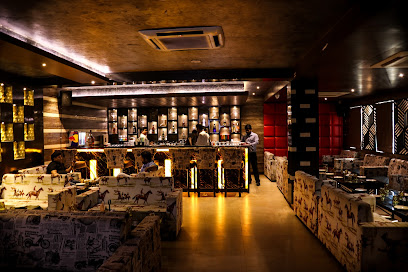
Oceana
Experience the vibrant atmosphere and exquisite flavors at Oceana, Bhubaneswar's premier bar and restaurant.
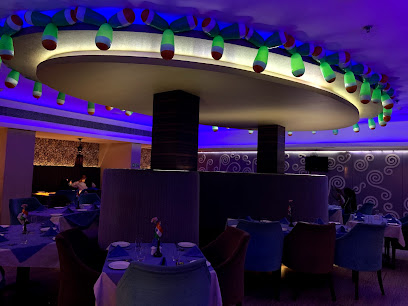
LIVE IT UP CLUB | BAR AND RESTAURANT
Discover the vibrant charm of Live It Up Club, a lively bar and restaurant in Bhubaneswar, perfect for food, drinks, and entertainment.
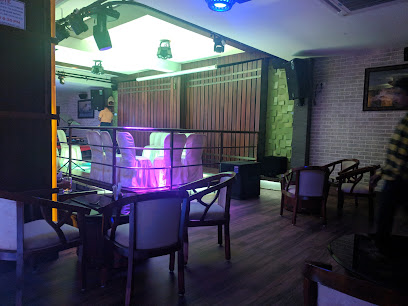
District High | Lounge Bar and Garden
Experience the vibrant culinary scene at District High, an enchanting lounge bar & garden in Bhubaneswar, perfect for unwinding with delicious food and drinks.
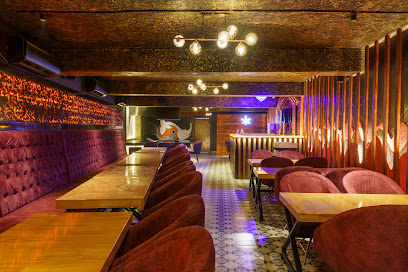
Flamingo Bar & Restaurant
Experience vibrant nightlife and delightful cuisine at Flamingo Bar & Restaurant in Bhubaneswar, the perfect spot for relaxation and indulgence.
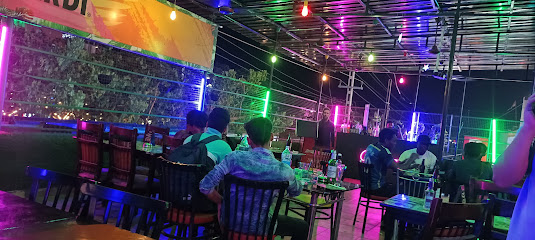
History of Bhubaneswar
-
Bhubaneswar, historically known as the 'City of Temples,' has roots tracing back to the Kalinga Empire around the 3rd century BCE. The region gained prominence under the rule of Emperor Ashoka, who after the infamous Kalinga War, embraced Buddhism. This significant event led to the spread of Buddhism not only in India but across Asia.
-
Bhubaneswar's spiritual landscape is diverse. In the early centuries CE, the city saw an influx of Jain and Hindu influences. The Udayagiri and Khandagiri Caves, with their intricate carvings and inscriptions, stand as a testament to the region's rich Jain heritage. Simultaneously, the construction of Hindu temples began, laying the groundwork for Bhubaneswar's reputation.
-
Between the 7th and 11th centuries CE, Bhubaneswar experienced a golden age of temple architecture. The city became a focal point of the Kalinga architectural style, characterized by intricately carved exteriors and towering spires. The Lingaraj Temple, Mukteshwar Temple, and Rajarani Temple are iconic examples from this period, each reflecting the zenith of Odishan temple design.
-
During the British colonial period, Bhubaneswar saw significant changes. Although the city retained its cultural heritage, it began to modernize. The British established administrative buildings and introduced new infrastructure. However, unlike many other Indian cities, Bhubaneswar maintained its traditional ethos and religious significance.
-
Post-1947, Bhubaneswar was chosen as the capital of the newly formed state of Odisha. The city underwent a planned development under the guidance of German architect Otto Königsberger. The modern city was designed to integrate its historical and cultural heritage with contemporary urban planning, resulting in a harmonious blend of the old and the new.
-
Today, Bhubaneswar stands as a vibrant cultural hub, seamlessly blending its ancient heritage with modern development. The city hosts numerous festivals, art exhibitions, and cultural events that celebrate its rich history. The Ekamra Kshetra, a heritage zone, and the annual Mukteshwar Dance Festival are significant cultural highlights, attracting visitors from around the world.
Bhubaneswar Essentials
-
Bhubaneswar is well-connected by air, rail, and road. The Biju Patnaik International Airport (BBI) serves both domestic and international flights. Major cities in India such as Delhi, Mumbai, and Bangalore have direct flights to Bhubaneswar. The city is also a major railway hub, with the Bhubaneswar Railway Station connecting it to various parts of the country. National Highways 16 and 18 provide road connectivity, and various state-run and private bus services operate regular routes to and from Bhubaneswar.
-
Bhubaneswar offers a range of transportation options. Auto-rickshaws and cycle-rickshaws are common for short distances. For longer routes, city buses operated by the Bhubaneswar-Puri Transport Services (BPTS) are available. App-based cab services like Ola and Uber are also operational in the city. For those who prefer driving, car rental services are available. The city is well-planned, making it relatively easy to navigate.
-
The official currency in Bhubaneswar is the Indian Rupee (INR). Major credit and debit cards are widely accepted in hotels, restaurants, and shops. ATMs are plentiful throughout the city for cash withdrawals. Digital wallets like Paytm, Google Pay, and PhonePe are also commonly used for transactions. It's advisable to carry some cash for smaller vendors and in areas where electronic payments may not be accepted.
-
Bhubaneswar is generally considered a safe city for tourists. However, standard precautions should be taken. Avoid isolated areas at night and be cautious with your belongings in crowded places. Areas like Old Town and parts of the railway station can be bustling, so stay alert. While the city does not have significant high-crime areas targeting tourists, it's always best to stay vigilant and aware of your surroundings.
-
In case of emergency, dial 100 for police assistance and 102 for medical emergencies. The city has several well-equipped hospitals like AIIMS Bhubaneswar and Kalinga Hospital. Pharmacies are widely available for minor health issues. It's recommended to have travel insurance that covers medical emergencies. The local tourist police are also available to assist tourists in distress.
-
Fashion: Do dress conservatively, especially when visiting temples and religious sites. Avoid wearing revealing clothing. Religion: Do show respect for local customs and traditions. Remove your shoes before entering temples and cover your head if required. Public Transport: Do be respectful to fellow passengers. Avoid eating or drinking on public transport. Greetings: Do greet people with a namaste (joining your palms together) or a handshake. Eating & Drinking: Do try local delicacies and accept food offerings graciously. Don't refuse hospitality, as it is considered impolite.
-
To experience Bhubaneswar like a local, visit the Ekamra Haat, a crafts village showcasing traditional Odia handlooms and handicrafts. Engage with the locals, who are known for their hospitality and willingness to share stories about their culture. Don't miss the local street food, especially items like Dahibara Aloodum and Pakhala Bhata. For a unique experience, take a morning walk through the Lingaraj Temple area to witness the daily rituals and the vibrant local life.
Trending Landmark in Bhubaneswar
-
Konark Sun Temple
-
Lingaraj Temple
-
Udayagiri and Khandagiri Caves
-
Dhauli Shanti Stupa
-
MAYFAIR Lagoon, Bhubaneswar
-
Pal Heights Mall
-
Biju Patnaik Park
-
ISKCON Bhubaneswar
-
Ekamra Haat
-
MAYFAIR Convention, Bhubaneswar
-
Ekamra Kanan Botanical Gardens
-
Shree Mukteswara Temple, Bhubaneswar
-
Regional Science Centre Bhubaneswar (Science Park)
-
IDCO Exhibition Ground
-
Ocean World Water Park
Nearby Cities to Bhubaneswar
-
Things To Do in Ranchi
-
Things To Do in Kolkata
-
Things To Do in Visakhapatnam
-
Things To Do in Raipur
-
Things To Do in Jessore
-
Things To Do in Khulna
-
Things To Do in Rajshahi
-
Things To Do in Barisal
-
Things To Do in Patna
-
Things To Do in Dhaka
-
Things To Do in Varanasi
-
Things To Do in Cox's Bazar
-
Things To Do in Comilla
-
Things To Do in Chittagong
-
Things To Do in Agartala













